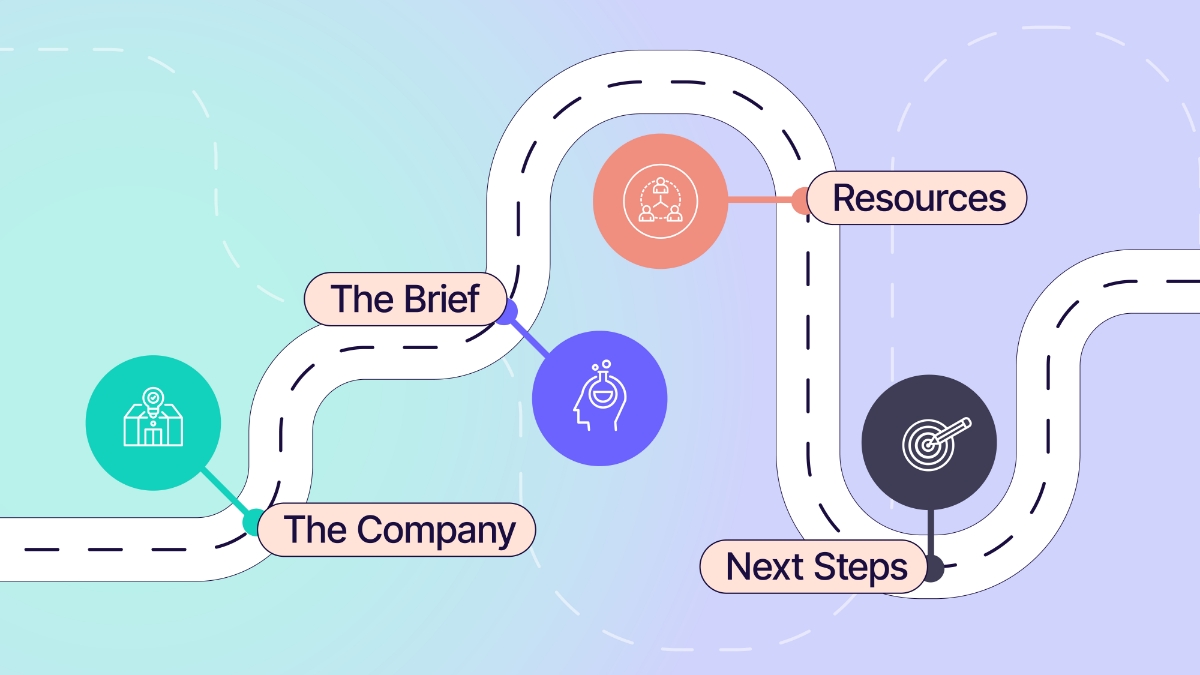When businesses embark on a new web project or a website redesign, it’s easy to get swept up in the excitement of new features, design trends, and cutting-edge technologies. However, diving straight into design or development without first defining the why behind your project can lead to costly mistakes, misaligned priorities, and wasted resources.
That’s where a digital roadmap comes in. Think of it as a plan that not only outlines what needs to be done but also clarifies the reasoning behind each decision, feature, and outcome. In this article, we’ll explore how a digital roadmap helps businesses understand why they are making certain decisions—ensuring that every step of the process aligns with broader goals and is measurable against real business objectives.
What is a Digital Roadmap?
A digital roadmap is a comprehensive plan that guides the journey from your high-level business vision to the practical steps needed to execute it. This roadmap ensures that every decision is intentional, aligned with business goals, and designed to deliver measurable results.
Understanding the Power of “Why”
In the rush to create something new, businesses often start by asking for specific features or functionality without considering the deeper question: Why do we need this?
Through the roadmapping process, businesses can drill down to the real goals—not just focus on features. A digital roadmap helps businesses ask crucial “why” questions to discover the true purpose behind every feature and decision. By doing so, it creates a clear vision of success and ensures that all team members—from the client to the designers to the developers—are aligned around the real objectives.
The Five Pillars of a Successful Digital Roadmap
Here’s how a digital roadmap can guide your project from why to what to how:
Business Alignment
A digital roadmap ensures that the website’s goals and design align with your broader business vision and values. By clearly defining your objectives—whether that’s driving more traffic, improving conversions, or enhancing customer engagement—the roadmap helps ensure your website is a powerful business asset rather than just an online brochure.
Team Unification
A roadmap provides everyone involved in the project—a client, designer, developer, or project manager—with a shared vision. It helps each team member understand their role in the process and how their work fits into the bigger picture. This collective understanding fosters collaboration, boosts morale, and ultimately leads to better outcomes.
Faster Time to Market
A well-crafted roadmap ensures that the team isn’t distracted by unnecessary features or changes that don’t serve the core objectives. By constantly revisiting the roadmap, the project stays focused on high-impact tasks, helping the team meet deadlines and get to market faster.
Adaptability
Even though the roadmap outlines the path, it’s flexible enough to allow for adjustments as priorities evolve. As new insights arise or market conditions change, a digital roadmap ensures that the project can adapt without losing sight of the final goal. This makes it easier to pivot or refine features based on real-world feedback or shifting business needs.
Project Satisfaction
With a clear roadmap in place, you’ll be able to understand how each decision and feature directly contributes to achieving your goals. Instead of simply requesting specific features, you’ll be able to see how those features align with your business objectives and how your website will deliver real, measurable outcomes.
The Cost of Neglecting a Digital Roadmap
Without a roadmap, businesses often rush into decisions based on trends or assumptions rather than clear objectives. This can lead to unnecessary features being added, such as a chatbot that doesn’t serve a clear purpose or a design overhaul that doesn’t improve user experience.
Without a roadmap, teams are left to navigate a maze of unclear priorities and undefined goals. This can lead to confusion, inefficiency, and misalignment—resulting in a final product that doesn’t quite hit the mark.
Conclusion
As websites become increasingly complex and integral to business operations, the importance of strategic planning cannot be overstated. A digital roadmap sets the stage for a web project that is not only successful at launch but also sustainable over time. It provides clarity, reduces risk, improves team collaboration, and ensures that your website delivers results aligned with your business goals.
Whether you’re starting a new web project or looking to improve your current site, taking the time to create a digital roadmap will help ensure that your vision is realised, and your project stays on track.
